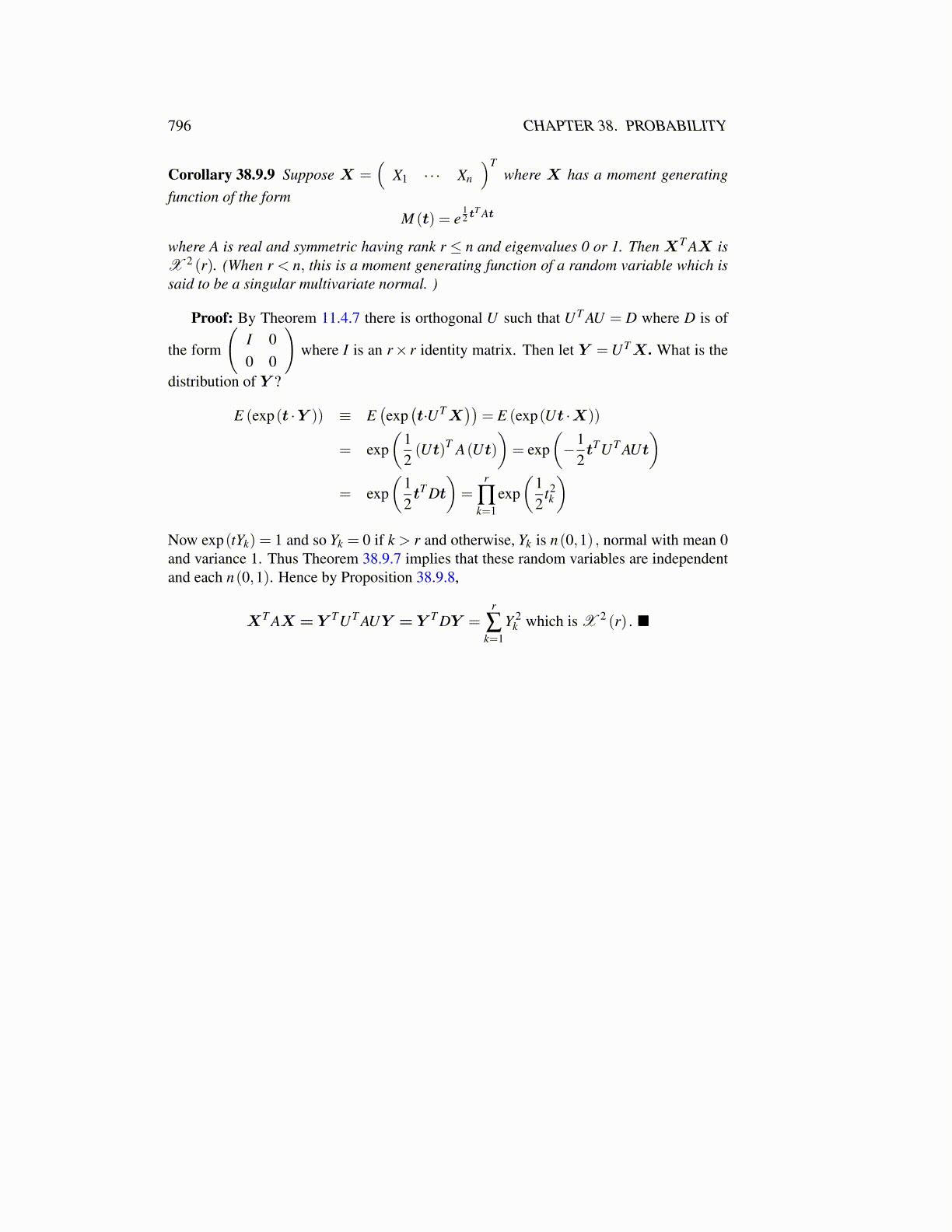
796 CHAPTER 38. PROBABILITY
Corollary 38.9.9 Suppose X =(
X1 · · · Xn
)Twhere X has a moment generating
function of the formM (t) = e
12 t
T At
where A is real and symmetric having rank r ≤ n and eigenvalues 0 or 1. Then XT AX isX 2 (r). (When r < n, this is a moment generating function of a random variable which issaid to be a singular multivariate normal. )
Proof: By Theorem 11.4.7 there is orthogonal U such that UT AU = D where D is of
the form
(I 00 0
)where I is an r× r identity matrix. Then let Y =UTX. What is the
distribution of Y ?
E (exp(t ·Y )) ≡ E(exp(t·UTX
))= E (exp(Ut ·X))
= exp(
12(Ut)T A(Ut)
)= exp
(−1
2tTUT AUt
)= exp
(12tT Dt
)=
r
∏k=1
exp(
12
t2k
)Now exp(tYk) = 1 and so Yk = 0 if k > r and otherwise, Yk is n(0,1) , normal with mean 0and variance 1. Thus Theorem 38.9.7 implies that these random variables are independentand each n(0,1). Hence by Proposition 38.9.8,
XT AX = Y TUT AUY = Y T DY =r
∑k=1
Y 2k which is X 2 (r) . ■